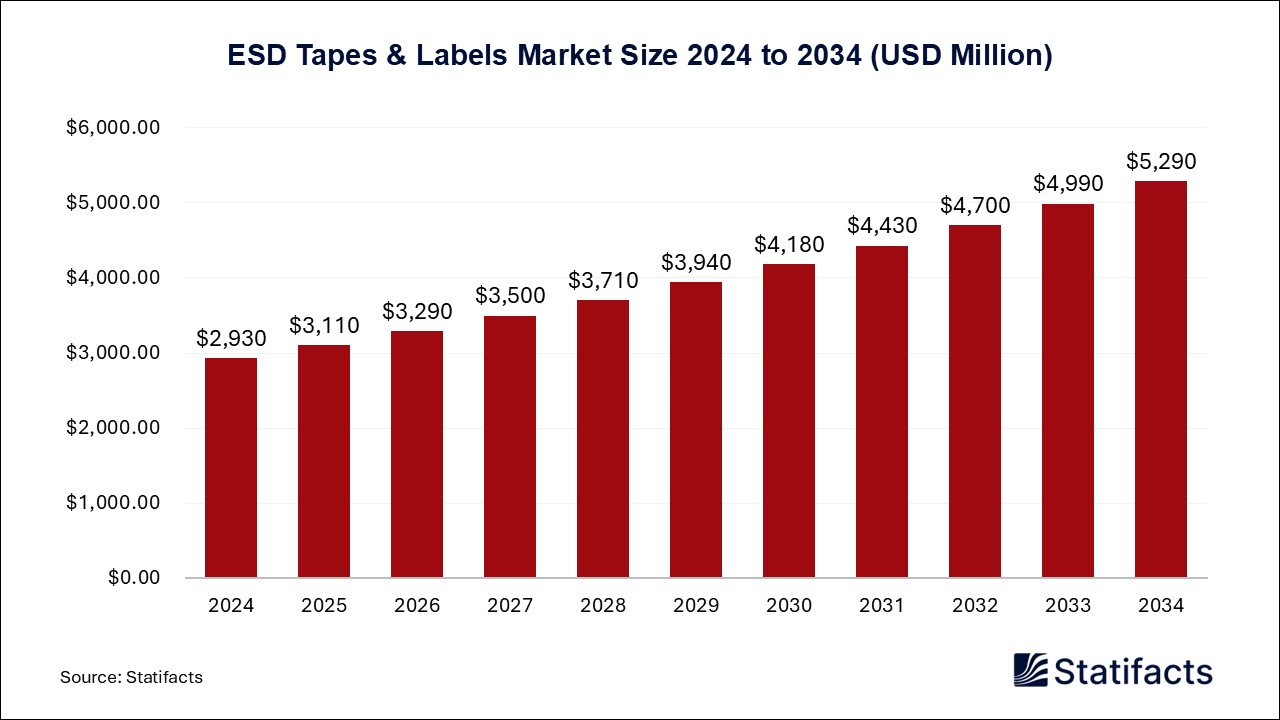
By clicking “Accept All Cookies” you agree to the storing of cookies on your device to enhance site navigation, analyze site usage, and assist in our marketing efforts.
Privacy PolicyEmbedded Direct Drinking Machine Market (By Type: Reverse Osmosis Drinking Machine, Ultrafiltration Drinking Machine; By Application: Household, Commercial; By Region: North America, Europe, Asia-Pacific, Latin America, Middle East and Africa) Industry Size, Share, Growth, Trends 2025 to 2034.
The global embedded direct drinking machine market, valued at USD 541 million in 2024, is projected to reach USD 906.74 million by 2034, growing at a CAGR of 5.3% driven by rising demand for convenient, sustainable, and efficient water purification solutions.
| Reports Attributes | Statistics |
| Market Size in 2024 | USD 541 Million |
| Market Size in 2025 | USD 569.67 Million |
| Market Size in 2031 | USD 776.6 Million |
| Market Size by 2034 | USD 906.74 Million |
| CAGR 2025 to 2034 | 5.3% |
| Base Year | 2024 |
| Forecast Period | 2025 to 2034 |
The embedded direct drinking machine market is growing at a steady pace, driven by increasing public awareness of the need for high-quality drinking water. Tap water has raised many concerns in recent years, as the report by the WHO also mentions that around 1 million people are estimated to die every year due to diarrhea caused by unsafe drinking water. Underdeveloped economies may act as a barrier to market growth due to a lower understanding of such machines, which leads to traditional preferences.
The increasing adoption of these machines in commercial settings, such as schools, corporate offices, hotels, hospitals, and others, is expected to play a crucial role in driving the market's rapid growth in the future. The adoption of technologies is also expected to facilitate integration with smart monitoring systems in residential settings. Moreover, the use of artificial intelligence (AI) is also being implemented in the manufacturing sector to minimize errors and increase productivity.
| Regions | Shares (%) |
| North America | 30% |
| Asia Pacific | 35% |
| Europe | 28% |
| Latin America | 4% |
| Middle East & Africa | 3% |
| Segments | Shares (%) |
| Reverse Osmosis Drinking Machine | 60% |
| Ultrafiltration Drinking Machine | 40% |
| Segments | Shares (%) |
| Household | 55% |
| Commercial | 45% |
Published by Vidyesh Swar
| Type | 2024 | 2025 | 2026 | 2027 | 2028 | 2029 | 2030 | 2031 | 2032 | 2033 | 2034 |
|---|---|---|---|---|---|---|---|---|---|---|---|
| Reverse Osmosis Drinking Machine | 324.60 | 340.66 | 357.52 | 375.21 | 393.76 | 413.23 | 433.66 | 455.09 | 477.57 | 501.16 | 525.91 |
| Ultrafiltration Drinking Machine | 216.40 | 229.01 | 242.35 | 256.45 | 271.38 | 287.16 | 303.85 | 321.51 | 340.19 | 359.94 | 380.83 |
| Application | 2024 | 2025 | 2026 | 2027 | 2028 | 2029 | 2030 | 2031 | 2032 | 2033 | 2034 |
|---|---|---|---|---|---|---|---|---|---|---|---|
| Household | 297.55 | 313.89 | 331.13 | 349.31 | 368.49 | 388.72 | 410.06 | 432.56 | 456.31 | 481.35 | 507.77 |
| Commercial | 243.45 | 255.78 | 268.74 | 282.35 | 296.65 | 311.67 | 327.45 | 344.04 | 361.45 | 379.75 | 398.97 |
| Region | 2024 | 2025 | 2026 | 2027 | 2028 | 2029 | 2030 | 2031 | 2032 | 2033 | 2034 |
|---|---|---|---|---|---|---|---|---|---|---|---|
| North America | 162.30 | 170.33 | 178.76 | 187.60 | 196.88 | 206.61 | 216.83 | 227.54 | 238.79 | 250.58 | 262.95 |
| Europe | 151.48 | 158.94 | 166.76 | 174.97 | 183.58 | 192.61 | 202.08 | 212.01 | 222.43 | 233.36 | 244.82 |
| Asia-Pacific | 189.35 | 200.52 | 212.35 | 224.87 | 238.12 | 252.14 | 266.98 | 282.68 | 299.30 | 316.88 | 335.49 |
| Latin America | 21.64 | 22.79 | 23.99 | 25.27 | 26.61 | 28.02 | 29.50 | 31.06 | 32.71 | 34.44 | 36.27 |
| Middle East and Africa | 16.23 | 17.09 | 18.01 | 18.95 | 19.95 | 21.01 | 22.12 | 23.31 | 24.53 | 25.84 | 27.21 |
| Subsegment | 2024 | 2025 | 2026 | 2027 | 2028 | 2029 | 2030 | 2031 | 2032 | 2033 | 2034 |
|---|---|---|---|---|---|---|---|---|---|---|---|
| Reverse Osmosis Drinking Machine | 324.60 | 340.66 | 357.52 | 375.21 | 393.76 | 413.23 | 433.66 | 455.09 | 477.57 | 501.16 | 525.91 |
| Ultrafiltration Drinking Machine | 216.40 | 229.01 | 242.35 | 256.45 | 271.38 | 287.16 | 303.85 | 321.51 | 340.19 | 359.94 | 380.83 |
| Subsegment | 2024 | 2025 | 2026 | 2027 | 2028 | 2029 | 2030 | 2031 | 2032 | 2033 | 2034 |
|---|---|---|---|---|---|---|---|---|---|---|---|
| Household | 297.55 | 313.89 | 331.13 | 349.31 | 368.49 | 388.72 | 410.06 | 432.56 | 456.31 | 481.35 | 507.77 |
| Commercial | 243.45 | 255.78 | 268.74 | 282.35 | 296.65 | 311.67 | 327.45 | 344.04 | 361.45 | 379.75 | 398.97 |
| Subsegment | 2024 | 2025 | 2026 | 2027 | 2028 | 2029 | 2030 | 2031 | 2032 | 2033 | 2034 |
|---|---|---|---|---|---|---|---|---|---|---|---|
| North America | 162.30 | 170.33 | 178.76 | 187.60 | 196.88 | 206.61 | 216.83 | 227.54 | 238.79 | 250.58 | 262.95 |
| Europe | 151.48 | 158.94 | 166.76 | 174.97 | 183.58 | 192.61 | 202.08 | 212.01 | 222.43 | 233.36 | 244.82 |
| Asia-Pacific | 189.35 | 200.52 | 212.35 | 224.87 | 238.12 | 252.14 | 266.98 | 282.68 | 299.30 | 316.88 | 335.49 |
| Latin America | 21.64 | 22.79 | 23.99 | 25.27 | 26.61 | 28.02 | 29.50 | 31.06 | 32.71 | 34.44 | 36.27 |
| Middle East and Africa | 16.23 | 17.09 | 18.01 | 18.95 | 19.95 | 21.01 | 22.12 | 23.31 | 24.53 | 25.84 | 27.21 |
To get full access to our Market Insights, you need a Professional Account or a Business Suite.

You will receive an email from our Business Development Manager. Please be sure to check your SPAM/JUNK folder too.

You will receive an email from our Business Development Manager. Please be sure to check your SPAM/JUNK folder too.

Our customers work more efficiently and benefit from


